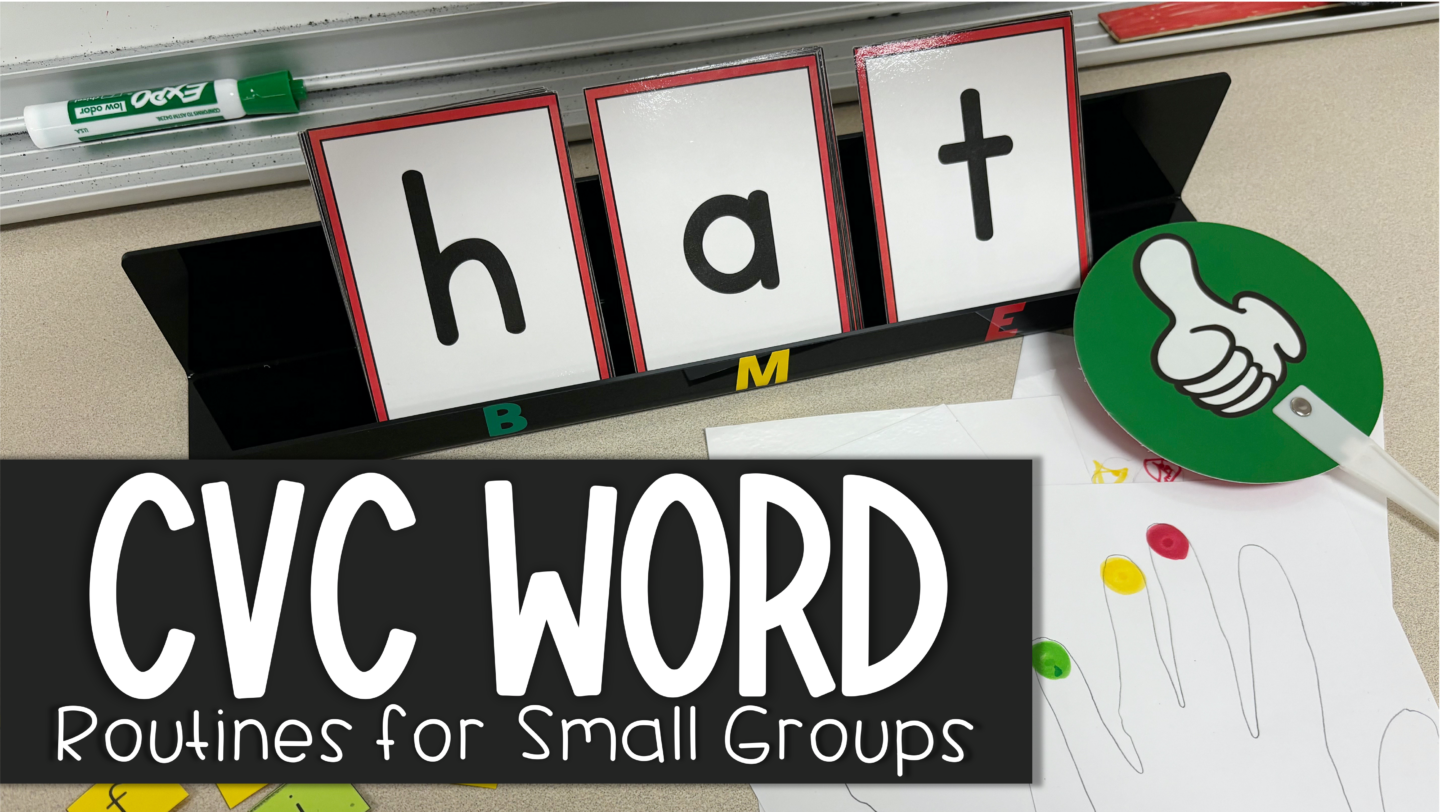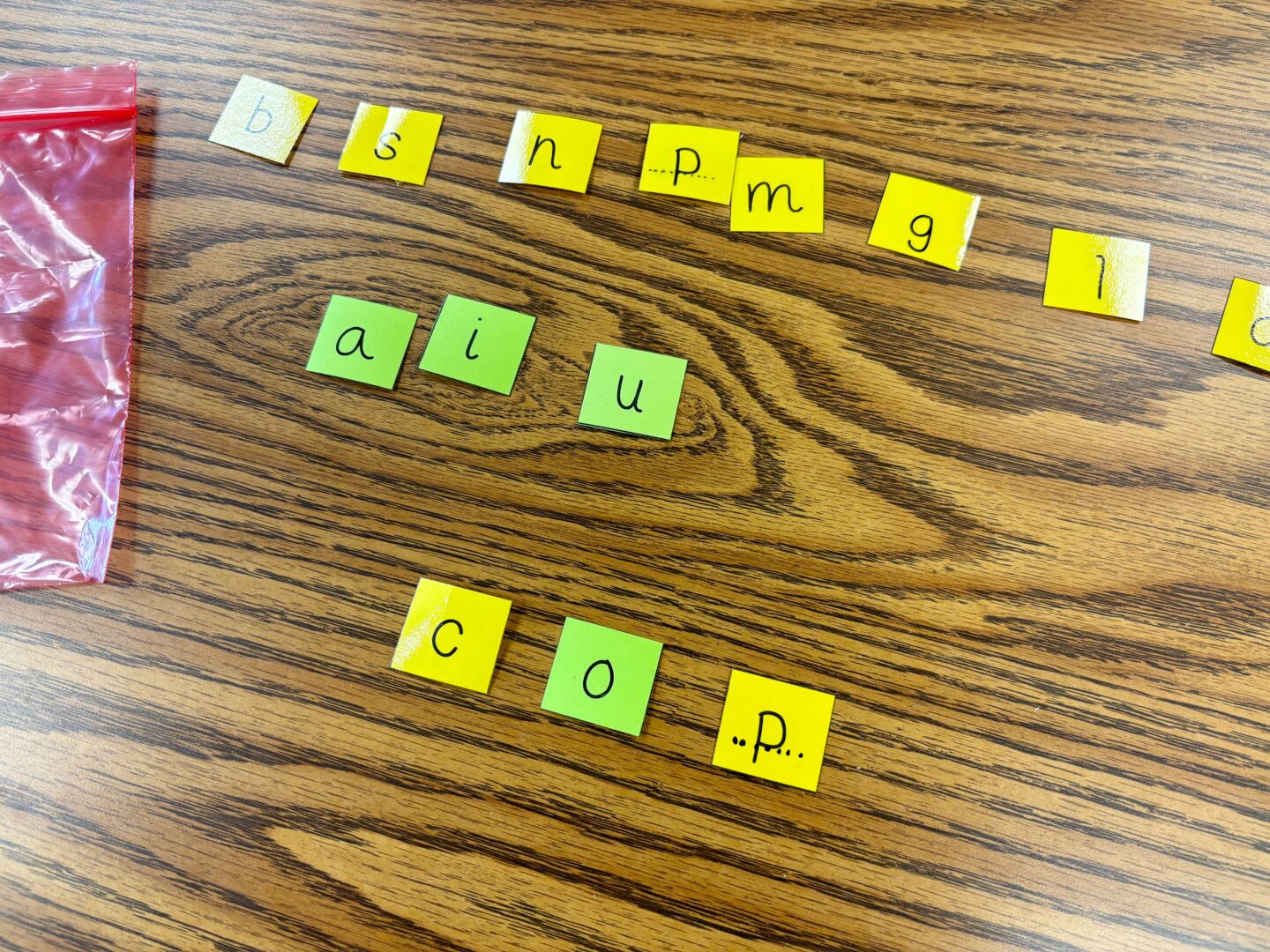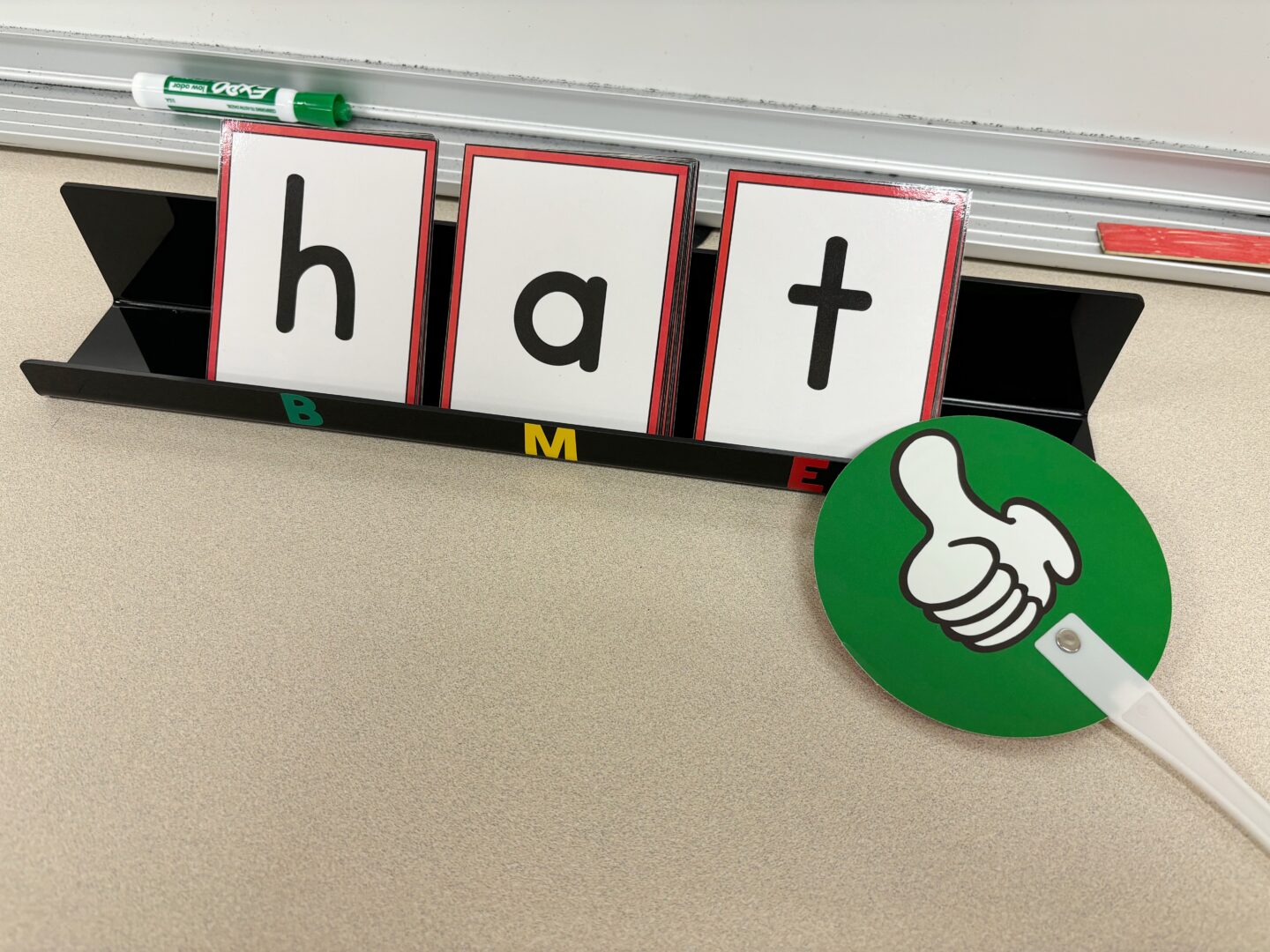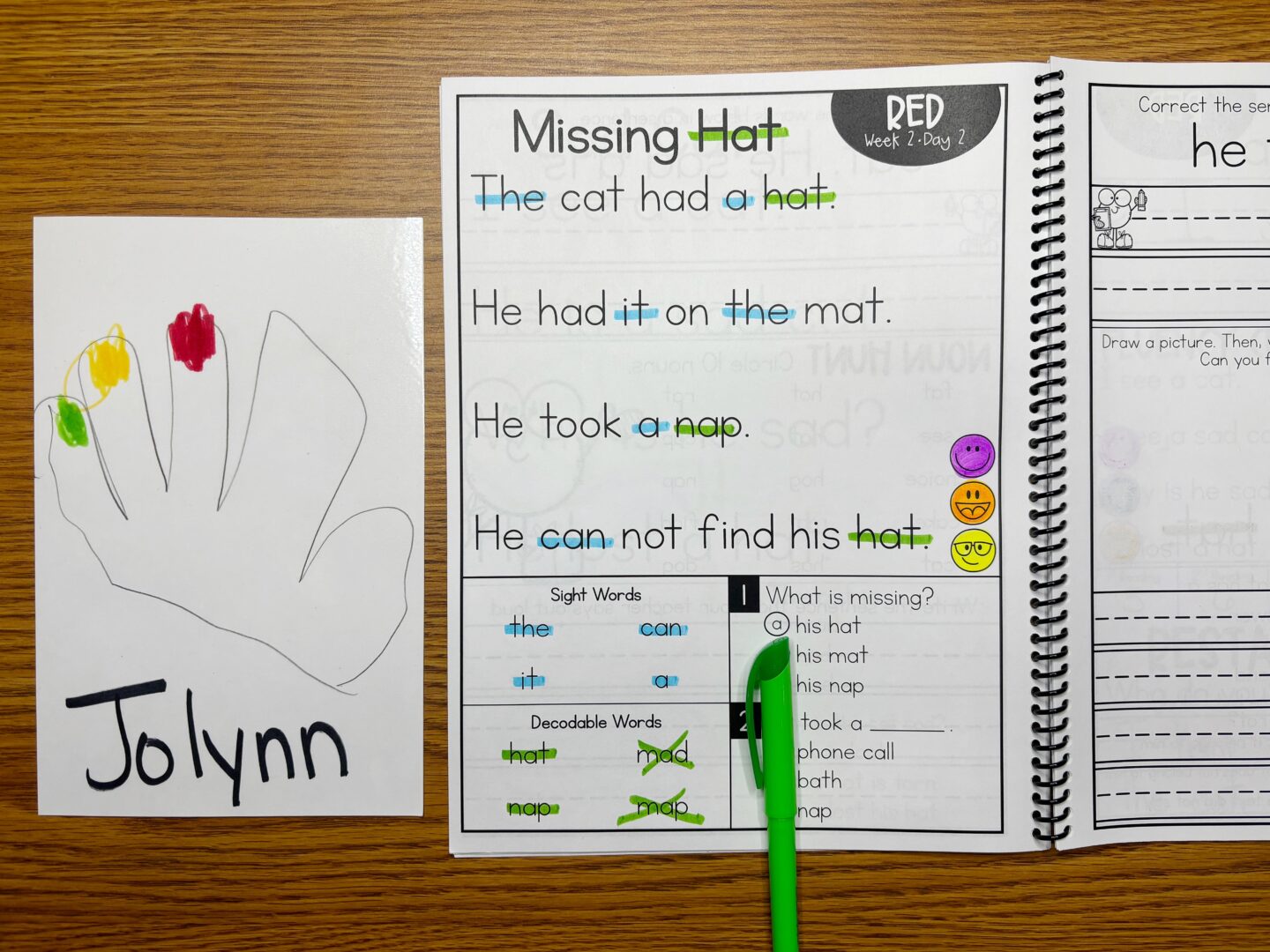
If you teach elementary special education like me, you probably have a LOT of students with decoding goals. For our little ones, it is often times a goal to help them work on mastering reading words with a Consonant-Vowel-Consonant (CVC) pattern.
Here are three routines that I do DAILY to help my students read words with a CVC pattern.

Spelling Bags
Now, I know, know. I said decoding. Why on Earth am I talking about spelling. I believe that this is a GREAT way to dedicate time to teaching phonics, whether that be reading or spelling words.
I spend a little time each day working on blending, spelling, and explicitly teaching spelling rules and patterns.

Blending Board
We use the blending board every. single. day. Why? The results are worth it. At the beginning of the year (or my time with a new student), I am doing a lot of the work here. I am saying the majority of the sounds. Maybe they help with the sounds, but I’m doing a lot of the blending.
But over time, they begin to develop the skills needed to blend words.

Multi-Sensory Strategies
When I attended Orton-Gillingham training years ago, they use the phrase “pound the word.” For years, this is what I did. We pounded the word. It worked and I loved it. If you do that, I suggest continuing it.
A couple of years ago, my school adopted Sonday Essentials, which tells students to use touch spelling. Essentially, the idea and concept are the same. Their fingers are extended (pounding) or tapping (touch spelling) for each of the three sounds in a word.
When we begin finding our “green words” in our reading book, I pass our their hands. They put their hands together and we stretch out the sounds.
Typically, this portion of our instruction looks something like this:
Teacher: What is the first sound in ____?
Students: /_____/
Teacher: Push your green button and say /_____/.
We all push the green button and say /_____/.
Teacher: Add the other two sounds.
We all push our yellow and red buttons as we add the other two sounds.
